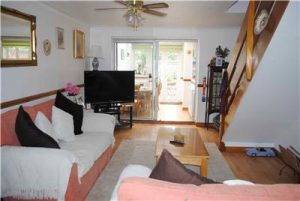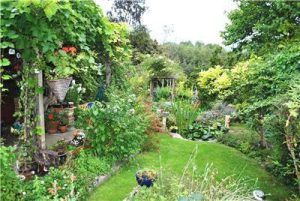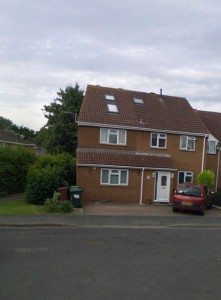I saw this guy busking on Cornmarket in Oxford in May 2013. That’s just… incredible.
I saw this guy busking on Cornmarket in Oxford in May 2013. That’s just… incredible.
I’ve got a new favourite game, this week: Movie Title Mash-Ups (with thanks to Cougar Town). Ruth and I sat up far too late last night, playing it. Here’s how you do it:

Take two movie titles which share a word (or several words, or just a syllable) at the end of one and at the beginning of the other. Shmoosh them together into a combined movie title, then describe the plot of that movie in a single sentence by borrowing elements from both component movies. See if anybody can guess what your mash-up movies were.
Here are some examples. The answers are ROT13-encoded, but if you’re reading this post directly on my blog, you can click on each of them to decode them (once you’ve given up!).
—
Zombies claw their way out of a graveyard, and Batman spends most of the film hiding in the attic.
Gur Qnex Xavtug bs gur Yvivat Qrnq
—
While trapped in an elevator at the end of October, a superficial man is hypnotised into murdering a bunch of high-school students with knife.
Funyybj Unyybjrra
—
A crazy professor and a kid travel back in time in a souped-up car, where local bully Biff cuts off the kid’s hand and tells him he’s his father.
Gur Rzcver Fgevxrf Onpx gb gur Shgher
—
Bill Murray has to live the same day over and over, until he can survive the zombie apocalypse by escaping to an island.
Tebhaqubt Qnl bs gur Qrnq
—
A pair of alcoholic, out-of-work actors stay at the countryside house of a Monty, dangerous robot who has learned to override his programming.
Jvguanvy naq V, Ebobg
—
An evil genie who maliciously manipulates words and misinterprets wishes opens a portal between Eternia and Earth, which He-Man and Skeletor come through.
Jvfuznfgref bs gur Havirefr
—
A bunch of outlawed vigilante superheroes fight shapeshifters and werewolves as they investigate a mystical curse which threatens to shatter the fragile cease-fire between Dark and
Light forces in Russia.
Avtug Jngpuzra
—
Harrison Ford and Michelle Pfeiffer hold a seance to communicate with subterranean humans who worship a giant bomb.
Jung Yvrf Orarngu gur Cynarg bs gur Ncrf
—
A lion cub born to a royal family grows up, climbs the Empire State Building, and fights aeroplanes.
Gur Yvba Xvat Xbat
—
James Bond is sent to investigate the murder of three British MI6 agents, who turn out to have been killed using a military satellite that concentrates the sun’s rays into a
powerful laser. (hint: both films are James Bond films)
Yvir naq Yrg Qvr Nabgure Qnl
—
So, what can you come up with?
@pickettywitch @paganwandererlu Belated
congratulations, both! (News of Arianwen’s arrival came slowly through the gossip circuit; sorry!)
This checkin to GC25WHN The ox-stream caching series - Potts Stream reflects a geocaching.com log entry. See more of Dan's cache logs.
Seemed pretty clear where the cache ought to be, but I couldn’t find this one. It’s possible that if I’d had more time (people kept walking their dogs by me and I had to stop the search) I’d have found it, but it seems more likely, given recent logs, that it’s gone. :(
This checkin to GLB9T1P9 The ox-stream caching series - Castle Mill Stream reflects a geocaching.com log entry. See more of Dan's cache logs.
Found while on my lunch break. Took a bit of stealth to avoid all of the foot-traffic, and I spent some time looking in the wrong place entirely. TFTC!
This checkin to GLB9T1K4 The ox-stream caching series - Wareham Stream reflects a geocaching.com log entry. See more of Dan's cache logs.
Found without difficulty while on my lunch break. Great little container! TFTC!
This checkin to GCRQ9W Three Counties View reflects a geocaching.com log entry. See more of Dan's cache logs.
No luck. Had a great GPSr fix, and found two places that I thought would be perfect cache hiding places, but one was empty, and the other was full of the litter of some inconsiderate barbequers: I wonder if the latter used to be the location of this cache, and that it was destroyed by these litterbugs when they left their plastic cups, plates, and burnt-out disposable barbeque there?
I wasn’t carrying so much as a backpack, or I’d have done a litter-pick. Makes me sad to see such a beautiful landscape being destroyed by folks who won’t take their rubbish home with them.
This checkin to GLB902AN Sugarloaf reflects a geocaching.com log entry. See more of Dan's cache logs.
I don’t know what chrisabarker is talking about: it was a little blustery, but wonderful weather for a quick job up Sugar Loaf Hill! I went up on the morning, as I woke up earlier than the folks I was training during an away weekend for a voluntary organisation I’m part of, and loved finding this wonderful cache (and in such a beautiful area!). TFTC.
This checkin to GLB6RQ5F Dear Fred... reflects a geocaching.com log entry. See more of Dan's cache logs.
Is this really the most-famous visitor to Jersey? Didn’t Queen Victoria come here? Arguments about relative fame and influence aside, fleeblewidget and I were able to do most of our research on the Internet, and got her mother to find the stone and extract the numerals as we walked nearby. fleeblewidget‘s mother didn’t feel up to the trek up to the cache, so she stayed behind. Not having a map, fleeblewidget and I weren’t able to pinpoint the cache location by any more than its direction and distance, and we took a wrong turning and looped around about twice the distance we meant to before we found the path upon which the cache resides. Found it quite easily on the way back, despite distraction from a pretty noisesome thrush, singing his little heart out up the tree above. Lovely place for a cache. Thanks!
Log’s looking a little damp; I should’a brought some silica gel.
This checkin to GLB6RPJ9 View over St Aubins reflects a geocaching.com log entry. See more of Dan's cache logs.
Coming up having just found Not Much Room, we didn’t think to continue along the footpath and instead took the road, leading to a long double-back: whoops! Found the viewpoint easily (although recent tree growth has somewhat blocked the view), and – soon afterwards – the cache. Took a copy of the address of the Carstens in Nindorf to send them a postcard, and signed the log. TFTC.
This checkin to GLB6RP12 Not much room? reflects a geocaching.com log entry. See more of Dan's cache logs.
My 100th cache find turned out to be also my most-Southerly find so far, and also turned out to be a most-spectacular little hiding place. After walking up and down the path a bit with fleeblewidget and her mother, while our GPSrs got their bearings, we managed to pinpoint the location almost exactly, but we were still clueless. Eventually, it was fleeblewidget‘s mother – completely new to caching – who decided to investigate what turned out to be exactly what we were looking for! A most-wonderful cache; thanks!
Log full, unable to sign.
his is my video review of the first episode of Godzilla Huntley’s (Captain AvAngel) new blog series, Family Vlog. See the original.
This review originally appeared on Steam. See more reviews by Dan.
So much fun. A quick, silly, stealth-and-hacking romp through a ludicrous world of jumping, falling, leaping, climbing.
This link was originally posted to /r/outside. See more things from Dan's Reddit account.
The original link was: http://i.imgur.com/sYVlwjk.png
This blog post is the second in a series about buying our first house. If you haven’t already, you might like to read the first part.
When Ruth, JTA and I first set out to look at houses, we didn’t actually plan on buying one. We’d just gotten to the point where buying one felt like an imminent logical step, and so we decided to start looking around Oxford to see what kind of thing we might be able to get (and what it would cost us, if we did). Our thinking was that, by looking around a few places, we’d have some context from which to springboard our own discussions about what property we’d one day like to own.

There’s something about “window shopping” for houses that’s liberating and exciting. We don’t need a house – we’ve got somewhere to live – but we’re going to come and look around anyway. Once you’re on their lists, estate agents will bombard you with suggestions of places that you might like, and you feel a little like they’re your servants, running around trying to please you (in actual fact, almost the opposite is true: they’re working on behalf of the seller… although it’s certainly in their interest to get the property sold promptly so that they can take their cut!).

But as we got into the swing of things, we discovered that we were ready to buy already. Between our savings (and, in particular, boosted by the first parts of my inheritance following my dad’s death last year, as we’re finally getting his estate sorted out), we actually have an acceptable deposit for a mortgage, and our renewal on our current place was looming fast. None of us having bought a house before, we did a bit of reading and decided that our first step probably ought to be to work out how much can we borrow. You know, just to make our window-shopping a little more believable. Maybe.

One of the estate agents we dealt with introduced us to a chap called Stefan Cork, a mortgage broker working as part of the Mortgage Advice Bureau network. We were still only window-shopping at this point, but hey: if we were going to be allowed some free, no-commitment mortgage advice, then we might as well work out how much we could potentially borrow, right? After checking his credentials (the three questions you should ask every mortgage broker), I spoke to Stefan on the phone, and talked him through our situation. I described our unusual relationship structure (which he took in his stride) and the way that we means-assess our household contributions, alongside more mundane details like how much we earn and what kind of deposit we could rustle up. He talked us through our options and ballparked some of the kinds of numbers we’d be looking at, if we went ahead and got a mortgage.

And somehow, somewhere along the line, our perspective switched. Instead of looking at houses just to give us a feel for what we might buy, “maybe next year”, we were genuinely looking to buy a house now. We re-visited some of the places we’d seen already, and increased our search of places we hadn’t yet seen. Over time, and by a process of elimination (slow Internet area; too many hills; too narrow staircases; too expensive; too wonky), we cut down our options to just three potential properties. And then just two. And then we came to an impasse.
So… we put offers on both. Under the law of England and Wales, a property purchase isn’t binding until the contracts have exchanged hands. Sellers benefit (and buyers suffer) from this all of the time, because it permits gazumping: even after the buyers have spent money on lawyers, mortgage applications, surveys and searches, the seller can change their mind and accept a higher offer from a different prospective buyer! But this legal quirk can work for buyers, too: in our case, we were able to put offers in of what we were willing to pay for each of two properties (different values, at that), and let them know that the first one of the two to agree to our price would be the one to get the sale!

Haggling for a house in this way felt incredibly ballsy (I’d been nominated as the negotiator on behalf of the other Earthlings), but it played against the psychology of our sellers. Suddenly, instead of being in a position of power (“no, we won’t accept that offer… go a little higher”), the sellers were made to feel that if they didn’t accept our offers (which were doubtless lower than they had hoped), they’d have a 50% chance of losing the sale entirely. When there are hundreds of thousands of pounds on the line, being able to keep your cool and show that you’re willing to go elsewhere is an incredibly powerful negotiating tactic.
True to our word: when one of them came back and accepted our offer, we withdrew the offer on the other house and began the (lengthy) paperwork to start getting the purchase underway. But that can wait for another blog post.